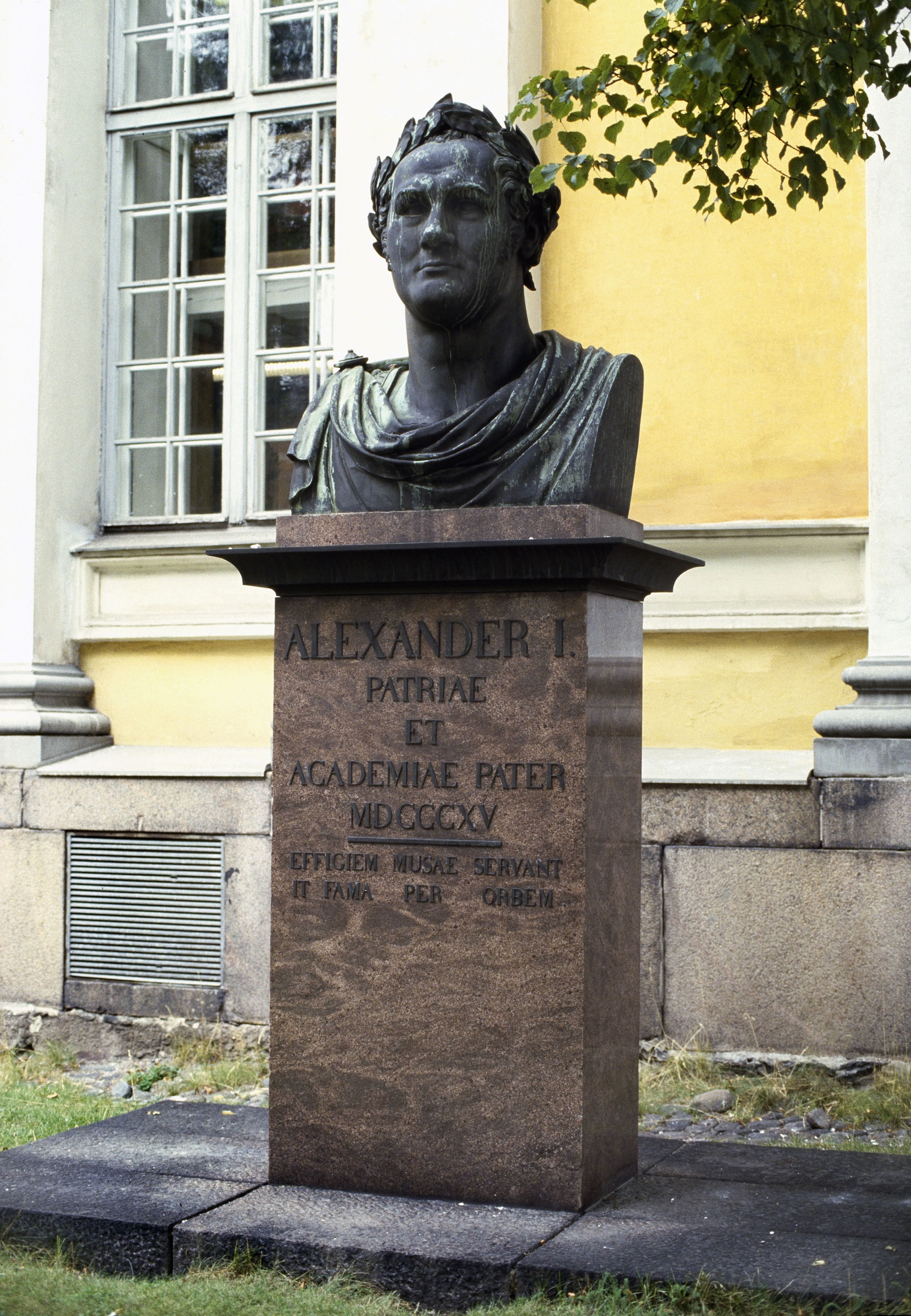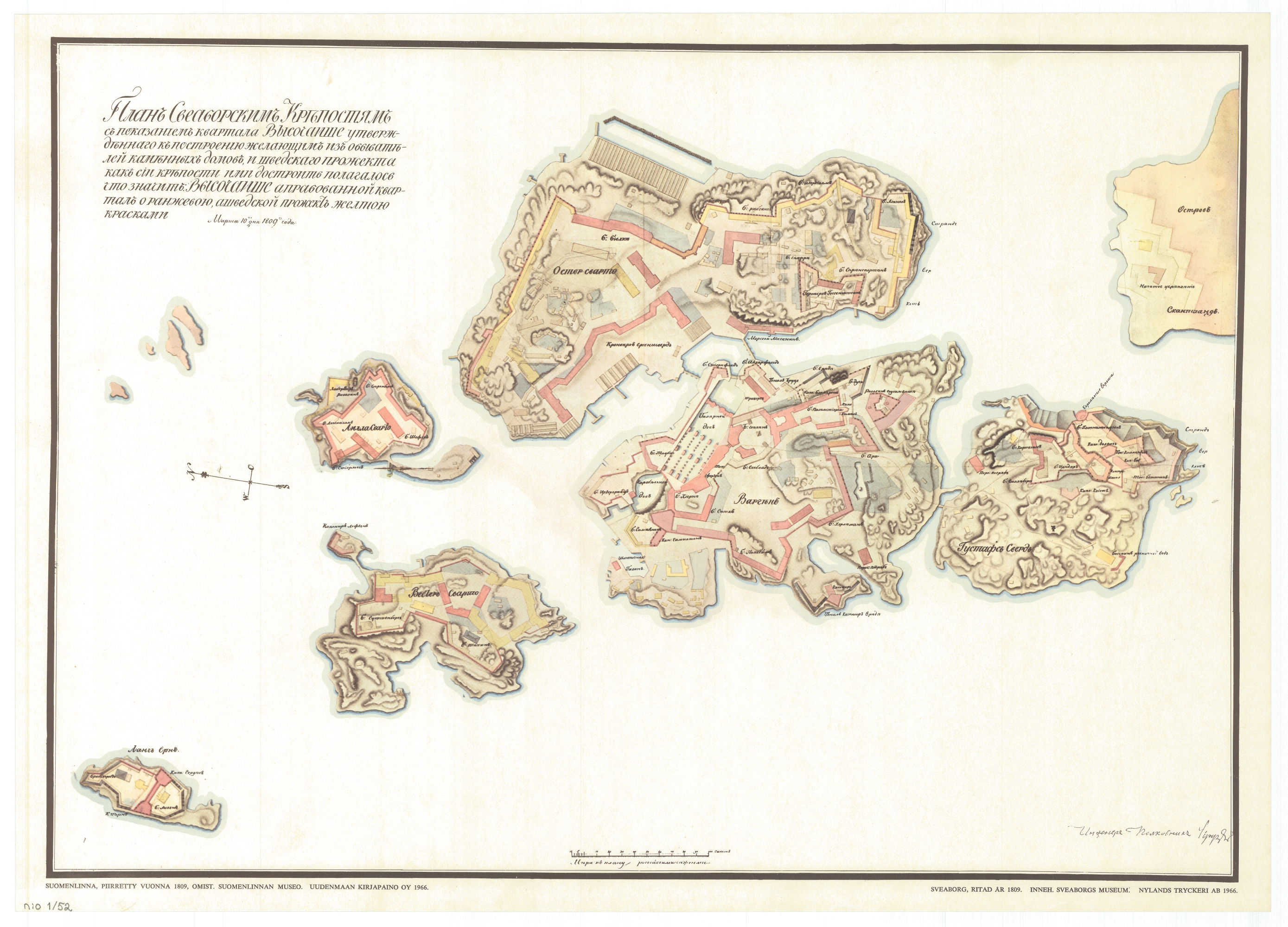The so-called Finnish War, fought in 1808-1809, was part of a wider series of major European wars, commonly known as the Napoleonic Wars. According to the agreement signed between France and Russia in Tilsit in 1807, Russia would pressure Sweden into joining the anti-British alliance. When Sweden did not sway under the pressure, Russia crossed the existing border at the river Kymijoki, and conquered several Swedish provinces. In 1809, these were annexed to the Russian Empire, forming the autonomous Grand Duchy of Finland, ruled by the Russian Czar Alexander I. His strategy included the pacification of the conquered territory, and for this reason Finland was given remarkably wide freedoms, including the right to the religion (Lutheranism), language (Swedish) and legal system of the era of Sweden’s rule. In addition, these rights were also granted to a zone wider than the conquered area: the original Grand Duchy did not cover the areas east of Kymijoki, such as the old fortress towns of Hamina, Lappeenranta, and Vyborg. The so-called Old Finland was incorporated into the Grand Duchy some years later.
For Russia, the location of Turku soon became a problem. As Finland's most important administrative centre, it was well connected to the former mother country, Sweden, and its capital Stockholm. The Russians, who at times worried about the loyalty of the Finns, considered Turku and especially its student union too pro-Swedish and started seeking out a new capital for the Grand Duchy of Finland. Helsinki, located further east, soon emerged as a significant alternative –– although Hämeenlinna, Porvoo, Vyborg, and even Loviisa and Vaasa were also considered as options. Helsinki lobbied strongly for capital status, as did the other cities.
The Viapori fortress, located right outside Helsinki, was in a significant position when it came to selecting the most suitable capital. The fortress island was thought to play an important role in the defence not only of Helsinki but also of the Russian capital St. Petersburg. The fire that broke out during the Finnish War in 1808 and destroyed a large part of the city also worked in Helsinki's favour. It was viewed as a chance to rebuild Helsinki with dignity, reflecting its new position as the capital of the Grand Duchy.
In 1812, the Committee for Finnish Affairs ultimately proposed to Emperor Alexander I that he appoint Helsinki as the new capital, and the emperor accepted. Naming the capital was considered an important decision in strengthening Finland's autonomous status and administrative system. Relevant officials of the Grand Duchy’s administration, such as the Civil Service of the Senate, were transferred from Turku to the new capital Helsinki in 1819. Later on, after the Turku fire of 1827, Emperor Nicholas I decided to also transfer the university to the capital and closer to the ruler's watchful eye.
Thanks to Russia's favourable policy, Helsinki became Finland's leading centre of administration and intellectual life in the first half of the 19th century. The small burgher town of the period of Sweden’s rule transformed into a rapidly developing city during the Grand Duchy, now inhabited by civil servants, Russian soldiers, academic university staff, and the worker population created by industry
Literature:
Klinge, Matti 2012. Pääkaupunki. Helsinki ja Suomen valtio 1808–1863. Helsingin kaupungin historiatoimikunta & Otava, Helsinki.



